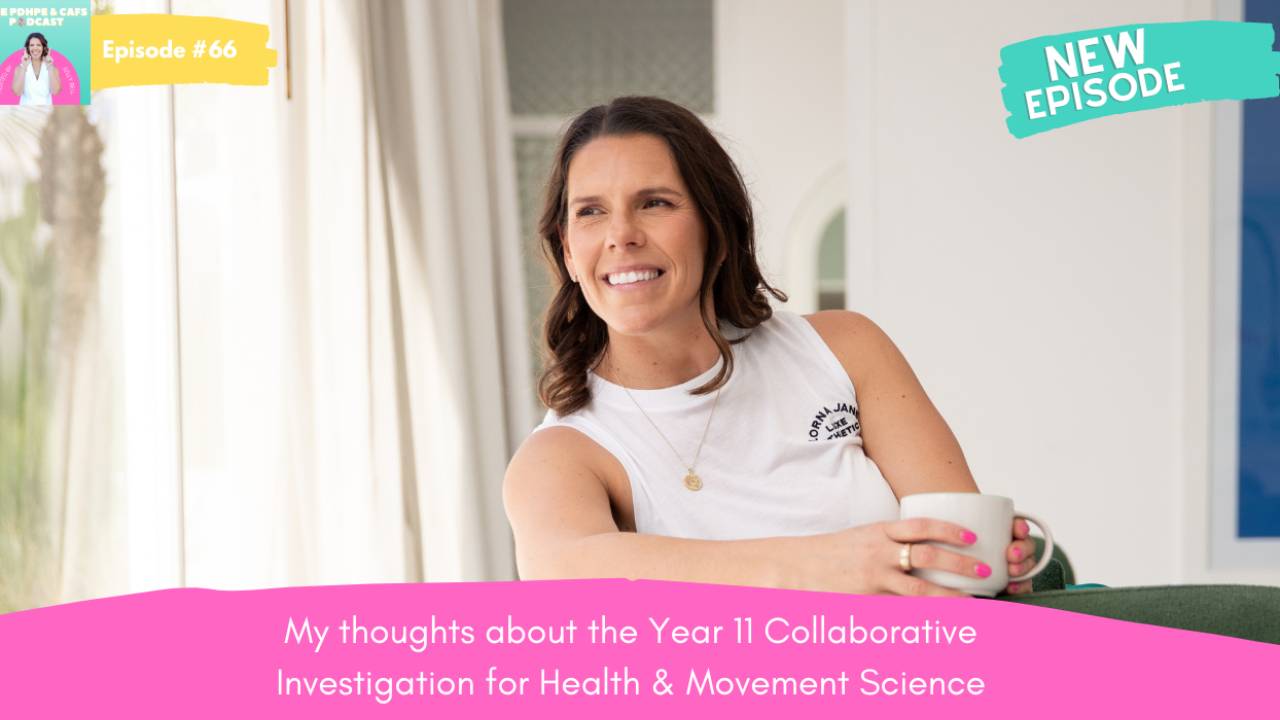Unlocking the Collaborative Investigation in Health and Movement Science
Aug 25, 2023
As a Health and Movement Science educator, you have a unique opportunity to empower your students with skills that will shape their future success. Let's explore the ins and outs of the Collaborative Investigation within the Health and Movement Science Syllabus for Year 11, offering you a step-by-step guide to navigate this innovative approach.
Let's dive in!
Why Collaborative Investigation Matters
The Collaborative Investigation might sound complex, but at its core, it's about Health and Movement Science students working together to explore and understand complex topics. Imagine your classroom buzzing with active discussions, brainstorming sessions and hands-on research activities. It's about providing your students with a taste of the real world, where effective teamwork and problem-solving are highly valued.
Integrating Collaboration into Your Curriculum
First things first, let's align the Collaborative Investigation with our Health and Movement Science Syllabus. This isn't an extra burden; it's a purposeful addition. According to NESA you will dedicate 20 hours of course time, seamlessly embedding it within your curriculum. The best part? The Collaborative Investigation is assessed, contributing to a minimum of 20% and a maximum of 40% of internal school-based assessment. Flexibility is your ally here – you can focus on "Health for Individuals and Communities" or "The Body and Mind in Motion," or find a synergy between the two.
Navigating the Collaborative Investigation Journey
Ready to embark on this transformative journey? Let's break it down into five key phases:
Phase 1
- Investigation introduction
- Collaborative group formation
- Topic proposal
- Preliminary research
- Research question
Phase 2
- Background research
- Propose hypothesis
Phase 3
- Method
Phase 4
- Data collection
- Data presentation
- Data analysis
Phase 5
- Conclusion
- Evaluation of investigation
- Presentation of investigation
NESA (2023)
Ready to inspire your students' curiosity? Consider these sample focus questions for Health and Movement Science:
What role do the determinants of health impact a young person’s meaning of health?
What health promotion campaigns have been the most successful in Australia?
What is the relationship between psychological factors and athletic performance?
What is the impact of HIIT training on the body?
Tailor these to suit your Health and Movement Science students' interests and dive into areas that ignite their passion for exploration.
The Teacher's Role in Facilitating Collaborative Investigation
As a Health and Movement Science teacher, you're not just a guide; you're the catalyst for meaningful learning. Consider a teacher-facilitated approach, forming research teams and assigning roles. This way, you can actively support students, provide feedback and ensure the investigation stays on track.
Joining the Collaborative Learning Community
You're not alone on this journey. Consider joining our Health and Movement Science Membership, where resources, mentoring and a supportive community await.
Exchange insights, share ideas and learn from fellow educators who are equally enthusiastic about tackling the Collaborative Investigation inside Health and Movement Science.
Taking Action: Your Pathway to Success
Ready to roll up your sleeves and make a real impact? Here's your action plan:
Select Your Investigation Area: Choose a focus area that resonates with your students and aligns with the curriculum.
Formulate Engaging Questions: Craft investigation questions that spark curiosity and encourage critical thinking.
Facilitate the Learning Process: Guide students through each phase, offering assistance, feedback and encouragement.
Encourage Diverse Presentations: Embrace a range of presentation formats that suit your students' strengths and preferences.
Prioritise Ethical Considerations: Ensure students maintain integrity, respect privacy and uphold ethical standards.
As you integrate the Collaborative Investigation into your Health and Movement Science classroom, you're shaping future leaders equipped with invaluable skills. This journey isn't just about coursework; it's about nurturing collaboration, critical thinking and effective communication – qualities that will serve your students well beyond the Health and Movement Science classroom.
So, dive in, embrace the power of teamwork and watch your students thrive in this dynamic educational experience.


